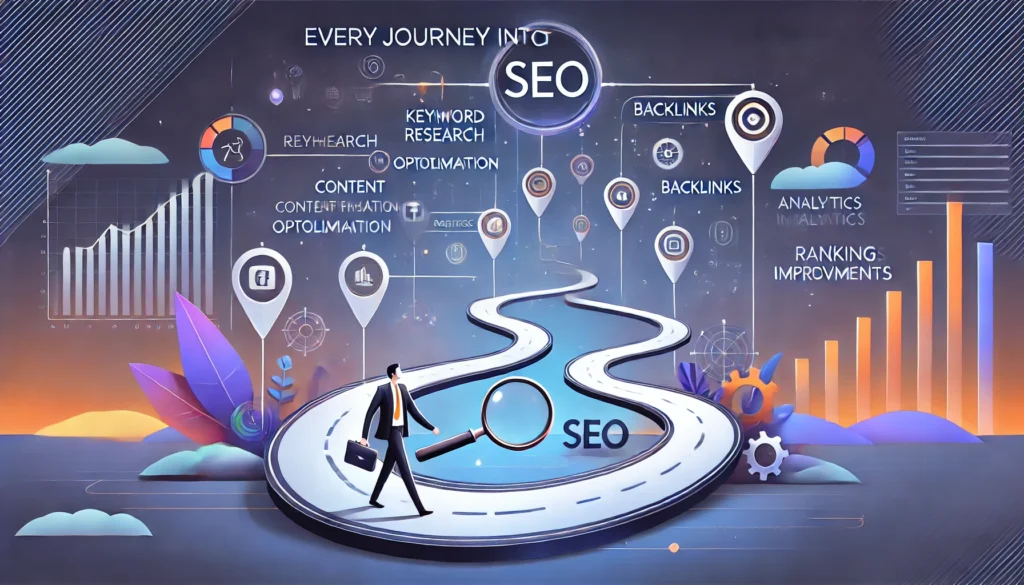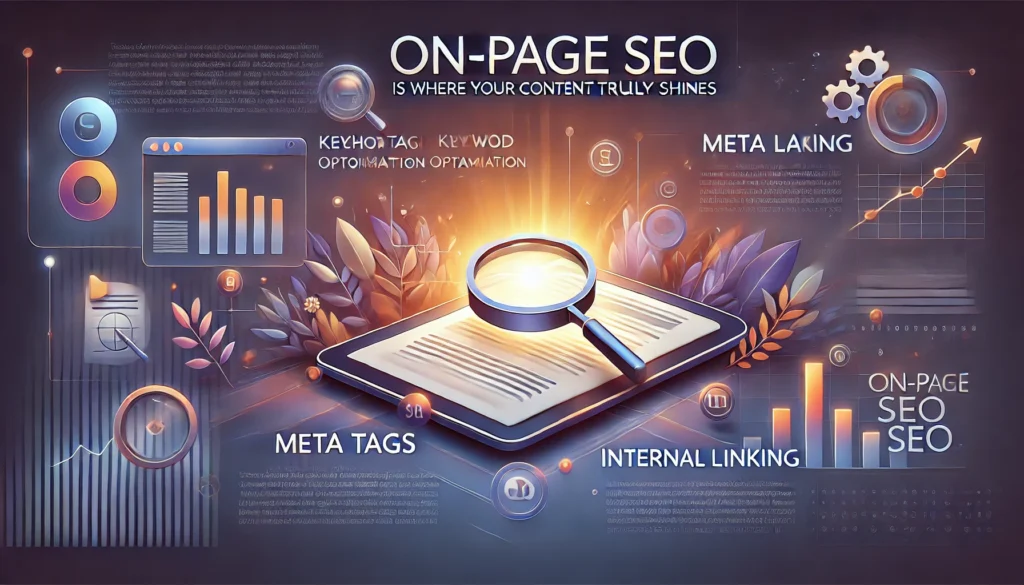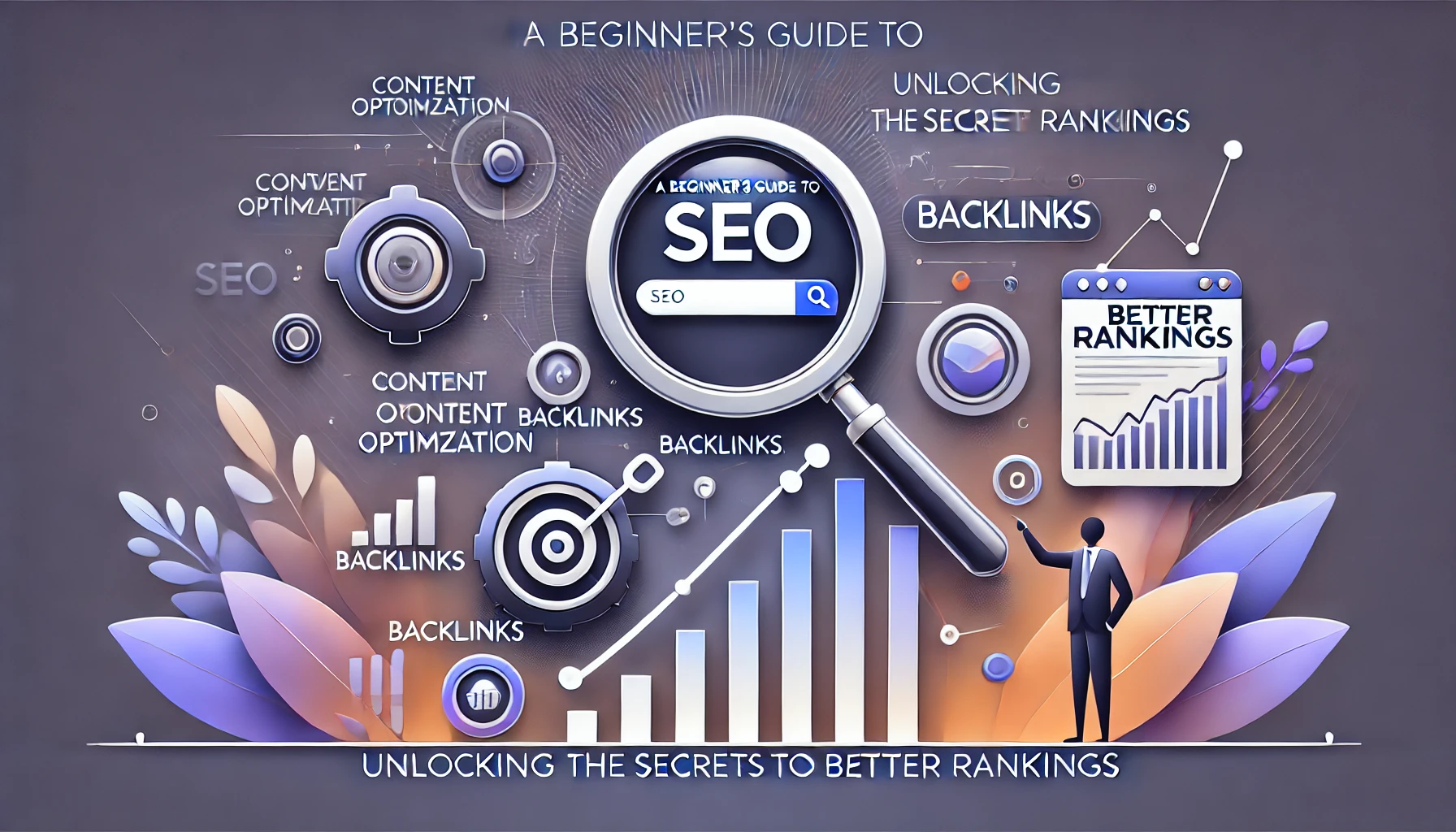Friday
21 FebA Beginner’s Guide to SEO: Unlocking the Secrets to Better Rankings
In today’s fast-paced digital world, creating a blog or website is easier than ever before. But how do you ensure your content doesn’t get lost in the sea of millions of other pages on the internet? For beginners venturing into the online space, the answer often lies in mastering Search Engine Optimisation (SEO).
One of the biggest challenges for new website owners and bloggers is understanding the seemingly complex world of SEO. You might find yourself asking: Where do I even start? How do I make sure my website is visible to the right audience? And what steps can I take today to improve my rankings on search engines like Google? These questions are common, but the answers don’t have to be daunting.
This guide breaks SEO down into manageable, beginner-friendly steps designed to take the guesswork out of optimising your content for search engines. Whether you’re completely new to SEO or have dabbled but want a clearer path forward, this post is your roadmap to success.
By the end of this guide, you’ll have a strong understanding of foundational SEO principles like keyword research, on-page optimisation, and even some off-page techniques to help your site rank higher and attract organic traffic. Ready to take the first step? Let’s dive in and unlock the secrets to better rankings.
What is SEO and Why is it Important?
Every journey into search engine optimisation starts with understanding what SEO truly means. At its core, SEO is about making your content more visible to the people who are searching for it. For example, when someone searches for a “guide to eco-friendly products,” SEO ensures that your well-crafted content has the best chance of appearing among the top results. This section explores why SEO is vital for beginners aiming to attract an audience and grow their online presence.

Search Engine Optimisation (SEO) is the practice of optimising your website so that it appears higher in search engine results, such as Google. At its core, SEO is about ensuring your content matches what users are searching for while also meeting the technical requirements search engines use to rank pages. But why is this important?
Key Statistics
- Over 90% of online experiences begin with a search engine.
- 75% of users never scroll past the first page of search results.
Consider this: If you’re a small business selling eco-friendly candles, targeting keywords like “sustainable candles” or “eco-friendly home decor” can connect you directly with customers searching for those products. Without SEO, you risk missing out on these organic opportunities.
SEO also builds trust and credibility. Appearing at the top of search results signals to users that your content is relevant and trustworthy. Combine this with actionable strategies—like researching popular keywords in your niche—and you’ll have a solid foundation to improve your visibility and grow your audience.
Understanding Search Intent and Keywords
Keywords are the foundation of any successful SEO strategy, but their true power lies in understanding the intent behind them. When users type queries into a search engine, they’re not just looking for words; they’re seeking answers. Whether it’s a how-to guide, product reviews, or direct purchases, understanding the motivation behind these searches allows you to create content that truly resonates with your audience.
Search intent is the reason behind a user’s query. Are they looking for information, trying to make a purchase, or seeking a specific website? Understanding this helps you create content that directly addresses their needs.
There are three primary types of search intent:
- Informational Intent: Users want to learn something. For example, “What is SEO?”
- Transactional Intent: Users are ready to make a purchase. For instance, “buy SEO tools.”
- Navigational Intent: Users are looking for a specific site, like “Google SEO guidelines.”
Tips for Effective Keyword Research
- Use tools like Google Keyword Planner, Ubersuggest, or SEMrush to identify relevant search terms.
- Focus on long-tail keywords such as “how to optimise a beginner blog for SEO” to attract specific audiences.
Example Implementation If your blog is about DIY crafts, phrases like “easy DIY projects” or “craft ideas for beginners” could be relevant keywords. Once you’ve identified these keywords, integrate them naturally into:
- Titles and subheadings.
- The first 100 words of your content.
- Alt text for images.
By understanding search intent and incorporating relevant keywords effectively, you’ll not only attract more visitors but also keep them engaged.
On-Page SEO Essentials

On-page SEO is where your content truly shines. By optimising individual pages, you ensure that both search engines and readers find your site valuable and easy to navigate. Whether it’s crafting a compelling blog post or designing a user-friendly landing page, on-page SEO practices allow you to highlight your expertise while making it simple for your audience to engage with your content.
On-page SEO involves optimising individual pages on your website to rank higher and earn more relevant traffic. This process focuses on elements you control directly within your content.
Key Insights
- Content exceeding 3,000 words attracts three times more traffic than average-length content of 1,400 words. (Source: AIOSEO)
Key Steps:
- Craft Compelling Titles and Meta Descriptions: Create keyword-rich titles like “10 Easy Ways to Boost Your SEO in 2025.” Pair with concise meta descriptions.
- Use Heading Tags Effectively: Structure with H1, H2, and H3 tags to improve readability.
- Optimise Images: Compress files and use descriptive alt text.
- Internal Linking: Guide users to other relevant pages on your site.
- URL Structure: Keep it simple, e.g., “yourwebsite.com/diy-projects.”
The Role of Technical SEO
While content and keywords are essential, technical SEO ensures that your website’s infrastructure supports those efforts. Think of it as building a strong foundation for your house—without it, even the most beautifully designed structure will falter. Technical SEO involves improving the backend elements that search engines rely on to understand and rank your site effectively.
Technical SEO focuses on backend elements to ensure search engines can crawl and index your content effectively.
Technical Checklist
- Improve Site Speed: Tools like Google PageSpeed Insights can identify bottlenecks.
- Mobile-Friendliness: Test responsiveness with Google’s Mobile-Friendly Test.
- Site Architecture: Use XML sitemaps and robots.txt files to streamline crawling.
Off-Page SEO for Beginners
Off-page SEO takes your optimisation efforts beyond your website, focusing on building your online reputation and authority. Activities like backlink building, social sharing, and garnering reviews demonstrate to search engines that your site is trustworthy and valuable. For beginners, off-page SEO can seem daunting, but starting with simple strategies can yield impactful results over time.
Off-page SEO involves actions outside your website to impact rankings within search engine results.
Key Statistics
- Pages ranking #1 has 3.8 times more backlinks than those in positions 2–10. (Source: RoseHosting)
Actionable Strategies:
- Build high-quality backlinks via guest posting or collaborations.
- Share content on LinkedIn and Twitter to attract backlinks.
- Encourage positive reviews on platforms like Google My Business.
Measuring SEO Success

SEO is a dynamic process, and tracking your efforts is crucial to refining your strategies. Whether it’s analysing organic traffic or monitoring keyword rankings, understanding how your optimisations are performing helps you make data-driven decisions. This section highlights the tools and metrics every beginner should use to measure their success.
Track Key Performance Indicators (KPIs):
- Organic Traffic: Use Google Analytics.
- Keyword Rankings: Monitor via Ahrefs or SEMrush.
- Bounce Rate: Refine content based on user behaviour.
Your Next Step to SEO Success
Embarking on your SEO journey might seem overwhelming at first, but with the right tools and strategies, you’re already on your way to better visibility and higher rankings. By focusing on search intent, leveraging keywords effectively, and implementing both on-page and off-page techniques, you’ll create content that not only attracts visitors but keeps them coming back.
Now is the perfect time to put these insights into action. Start by selecting one or two areas from this guide—perhaps refining your keyword strategy or optimising a blog post for on-page SEO—and take measurable steps today. Remember, SEO is a marathon, not a sprint, so stay consistent and patient.
If you’re ready to elevate your efforts, consider exploring advanced SEO tools or consulting with professionals to supercharge your progress. Let’s transform your site into a search engine magnet—one optimisation at a time!
